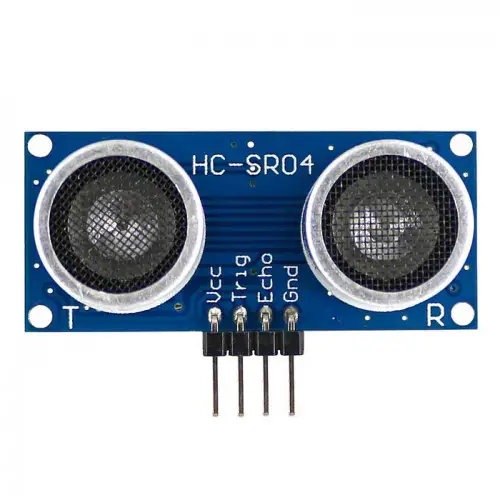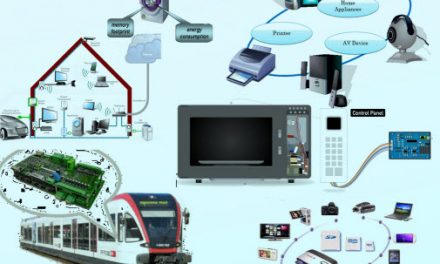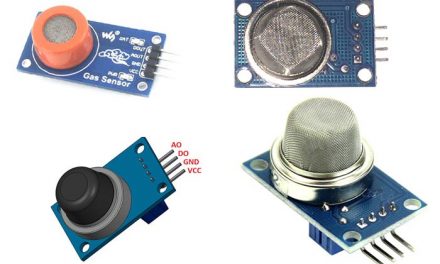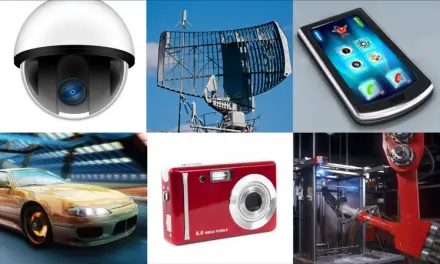The adoption of robots has seen a steep increase in the past years. These robots are now used for applications ranging from motor vehicle assembly to use in old people’s homes. A key piece of equipment needed for the robot to navigate is the ultrasonic sensor. This article will explain more about ultrasonic sensors, and give all the types of ultrasonic sensors.
Table of Contents
What is an Ultrasonic Sensor?
An ultrasonic sensor is a sensor that by emitting a sound wave of a specific frequency, and computing the results of the time taken for the sound wave to be reflected by an object and return to the sensor, is able to measure the distance of an object relative to it.
In order to calculate the distance, the ultrasonic sensor makes use of the fact that sound waves travel at a fixed speed. In dry air at 20 0C, sound waves travel at 343 metres per second. This therefore means that the distance is calculated by multiplying the speed of sound by the time taken for the wave to travel from the emitter, to the object and back to the receiver. The result is divided by two, and this gives the distance of the object relative to the ultrasonic sensor.
Note: In all types of ultrasonic sensors, there is a transmitting module and a receiving module.
Types of Ultrasonic Sensors
The ultrasonic sensor types are listed below:
- Ultrasonic Proximity Sensors
- Ultrasonic 2 Point Proximity Switches
- Ultrasonic Retro-reflective Sensors
- Ultrasonic Through Beam Sensors
Ultrasonic Proximity Sensors
In this type of ultrasonic sensor, a special type of sonic transducer is used for alternate transmission and reception of the sound waves. It emits the sonic waves. These are reflected by an object. By this time, the sensor would have switched to the receive mode. The total time passed between the sending and receiving of the sound wave is inversely proportional to the distance of an object from the sensor. In order to change the range, one simply adjusts the sensor’s variable resistor (potentiometer).
These are mainly used in distance detection.
Ultrasonic 2 Point Proximity Switches
This type of ultrasonic sensor consists of two points for switching, hence the name. It is quite similar to the standard ultrasonic sensor but differs from it in the sense that there is a 2-touch set up key. This function is referred to as the tech-in function. This switches SDE1 and SDE2 to allow them to be easily programmed within the sensing range with the assistance of the built in tech in button.
This ultrasonic sensor type can be used in stack height management.
Ultrasonic Retro reflective sensors
This ultrasonic sensor type is also similar to the operation of the Ultrasonic Proximity Sensor. The sound propagation measurement determines the distance from the sensor to the reflector, or object in the measuring range. Any sound reflecting, stationary object can be used as the reflector.
This ultrasonic sensor type is mainly used in sound absorbing materials such as cotton and foam rubber, with irregularly shaped and inclined objects and with sound deflecting target objects.
Ultrasonic Through Beam Sensors
These are ultrasonic sensor types that have short response times and have large ranges. The transmitter and receiver are in two separate housings. The transmitter continuously emits sound waves. It only transmits and does not receive. The receiver switches through the output stage when an object interrupts the sound waves.
This type of ultrasonic sensor is used in the monitoring of transparent materials, level monitoring in tanks and silos, and in the detection of objects in fast succession.
Important points to note
There are zones present that the user needs to be aware of. These zones highlight the distance in which detection of objects can take place.
1. Detection range
This is the zone in which object can be detected by the various types of ultrasonic sensors.
2. Limit zone
This refers to the minimum and maximum sensing distance. It can be adjusted through turning the potentiometer either clockwise or anti clockwise.
3. Undetected zone
The undetected zone is the zone in which no detection can take place. In this scenario the object may need to be brought close to the ultrasonic sensor.
Advantages of the Ultrasonic Sensor
- These sensors are easy to use, and they do not damage the environment in which they are used.
- Most if not all of the ultrasonic sensor types can be easily interfaced with a microcontroller.
- They can easily sense the nature, shape and orientation of objects in their vicinity
Disadvantages of the Ultrasonic Sensor
- Most of the types of ultrasonic sensors are not water resistant. This means that if they are immersed in water, they will get damaged.
- The person who is performing programming needs to read the manual to understand how best he can program his software application to interact with the ultrasonic sensor.
Applications of the Ultrasonic Sensor
- The ultrasonic sensors can be used for high speed counting. This means that if they are coupled to an embedded system, it will be able to quickly process the data input, thus showing the relevant results very quickly.
- It is used in robots as well as in applications with a device that needs to move autonomously. A good example of this is a line following and obstacle detection robot.
- This sensor can be used in measurement applications. It can be used to measure the amount of a liquid present. For example, it can measure the amount of oil, chemicals present, or water levels. These results are can then be fed to an embedded control system to perform relevant actions e.g. shut the valves if the liquid level is above a certain, predetermined value.
- It is also used in car parking system. In such systems a barrier will be present and will need to automatically stay up as long as vehicles are present. This prevents the obvious damage that will occur.
Conclusion
This article has given a description of the Ultrasonic sensor, the types of Ultrasonic sensors, and applications where it is used have also been given. Merits and demerits of the various ultrasonic sensor types have been given.
Next time try to identify where the ultrasonic sensor in a robot is.




![IoT Sensors [Types of Sensors & Uses]](https://greenthrottle.com/wp-content/uploads/2020/05/IoT-Sensors-440x264.png)
